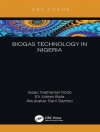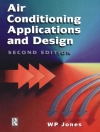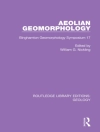This book focuses on green nanoremediation addressing aspects related to the use of nanomaterials generated through green synthesis protocols to efficiently restore polluted environs. Nanomaterials’ characteristics such as large surface area, capacity to easily reach into contaminated sites, good reactivity, and possibility of being developed to present photocatalytic activity and/or to deal with targeted substances by chemical surface modification are useful specially to perform remediation. As an alternative to conventional physicochemical methods, the green-based synthesis protocols reject the use of harmful reagents, prevent waste production, apply renewable energy source and/or materials, and consider in first place offering the smallest negative impact possible to living beings and to the ecosystem. Green synthesis in nanotechnology field involves the use of seaweeds, bacteria, cyanobacteria, yeasts, fungi, plants (living ones, biomass, extracts) and/or bio-derived products to generate the nanomaterials. The introductory chapter will be dedicated to nanomaterials’ characteristics that enable them to be used in environmental remediation. The first part of the book will be dedicated to organic and inorganic pollution and the threats they pose to living forms; advantages, disadvantages and mechanisms of nanoremediation; comparison between conventional strategies of environmental pollution remediation and the green nanoremediation; carbon-based and non-carbon-based green nanomaterials capable of promoting environs’ remediation; cost/benefits of using nanomaterials and nanoinformatics to a safe nanotechnology. The second part will be dedicated to green nanoremediation of water and soil, microbe-based, algae-based and plant-based synthesis of nanomaterials to nanoremediation. This part will also contain chapters dedicated to relevant nanomaterials for green nanoremediation protocols, nano-phytoremediation strategies, strategies to evaluate the efficiency of protocols related to this kind of remediation, main interactions of green nanomaterials and microbes during nanoremediation and, as a consequence of it, biocompatibility of green nanomaterials. This book’s main purpose is to offer readers extensive knowledge on green nanoremediation as a feasible strategy to fight pollution’s harmful consequences and clean environmental pollution, but also present the challenges that should be surpassed.
表中的内容
Chapter. 1. Important Features of Nanomaterials for Environmental Remediation.- Part. I: Green nanoremediation: generating eco-friendly nanoremediators.- Chapter. 2. Green-synthesis of nanomaterials for environmental remediation.- Chapter. 3. Nanoremediation: main strategies, advantages and disadvantages – Strategic methods of nanoremediation through nanomaterials synthesized from microbes.- Chapter. 4. Fungi-based synthesis to generate nanomaterials to nanoremediation.- Chapter. 5. Algae-based synthesis to generate nanomaterials to nanoremediation.- Chapter. 6. Plant-based synthesis to generate nanomaterials to nanoremediation.- Chapter. 7. Innovations on the synthesis of metal nanoparticles to nanoremediation.- Part II: Important green nanomaterials in the management of environmental pollution.- Chapter. 8. Main green nanomaterials to water remediation.- Chapter. 9. Green non-carbon-based nanomaterials to environs remediation.- Chapter. 10. Green Iron nanoparticles for nanoremediation.- Chapter. 11. Green Silver nanoparticles for nanoremediation.- Part III: Conjugating nanoremediation to other remediation strategies.- Chapter. 12. Green-based nanomaterial and plants in nanophytoremediation strategies.- Chapter. 13. Main interactions of green nanomaterials and microorganisms on nanoremediation protocols.- Part. IV: Safety aspects and analysis of nanoremediation.- Chapter. 14. Supporting nanotechnology safety through nanoinformatics.- Chapter. 15. Conventional strategies of environmental pollution remediation versus Green Nanoremediation.- Chapter. 16. Using nanoremediation strategies: cost/benefit analysis.- Chapter. 17. Strategies to evaluate nanoremediation efficiency.
关于作者
Dr. Fernanda Maria Policarpo Tonelli is specialized in Biotechnology/Molecular Biology and has been studying nanomaterials applications such as delivery and remediation. She has worked with engineered viral particles and nanomaterials functionalized by different protocols (gold nanorods, carbon nanotubes, carbon-dots, nanoparticles, nanographene oxide) that resulted in 10 patent applications. She teaches topics related to Biochemistry and Biotechnology/Molecular Biology to graduate students as an associate professor at Federal University of São João del Rei, Brazil. Dr. Tonelli main publication topics are nanomaterials, gene delivery strategies, remediation strategies and cell signaling. Dr. Tonelli has also dedicated herself to promote Science and Technology co-funding an ONG with this purpose and also joining a scientific divulgation group composed only by women. She has had her efforts as a researcher recognized by various awards (including For Women in Science Brazil-L’Oreal/UNESCO/ABC and Under30 Brazil – Forbes).
Dr. Arpita Roy is an Assistant Professor in Sharda University, Greater Noida, India. She specializes in Plant Biotechnology, Nanobiotechnology, Environmental Biotechnology and Microbiology. She has been teaching undegraduate and graduate students of Biotechnology on topics related to Plant Biotechnology, Microbiology, Bioprocess Engineering and Solid Waste Management. She has received the Commendable Research Award for excellence in research during the year 2019 and 2020- DTU. She has served as editorial board member and reviewer of reputed international journals.
Dr. H. C. Ananda Murthy has been a faculty member at various universities in India, Tanzania and Ethiopia for the last 24 years. He is currently working as Associate Professor, Department of Applied Chemistry, Adama Science and Technology University, Adama, Ethiopia. His research interest mainly includes synthesis and applications of composite materials and Nano-materials. He has been a guest editor for journal of nanomaterials and journal of renewable materials. He is also a review editor of Frontiers in Catalysis journal and Editorial board member of Annals of Applied Science journal.












